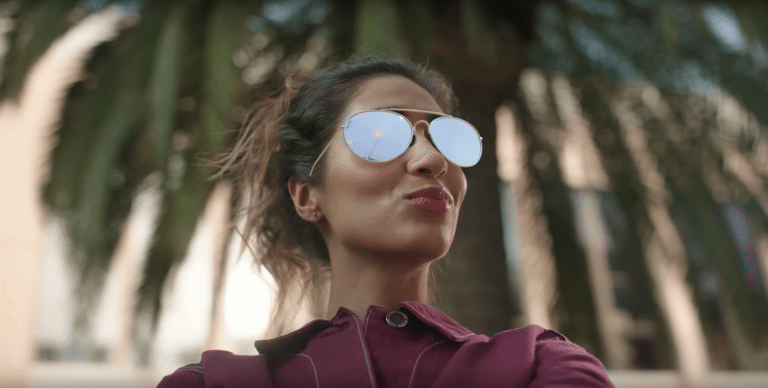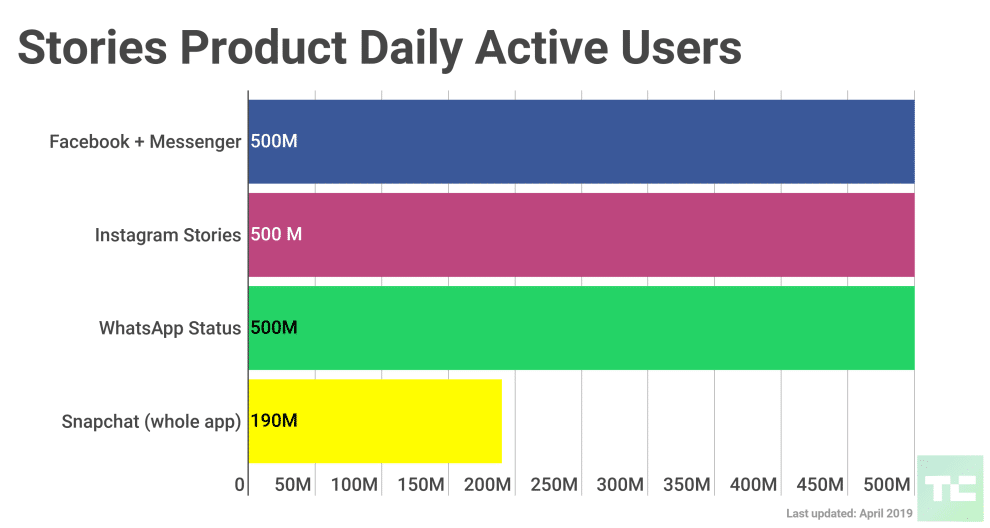
Data Point of the Week is AR Insider’s dive into the latest spatial computing figures. It includes data points, along with narrative insights and takeaways. For an indexed collection of data and reports, subscribe to ARtillery Pro.
New data tends to come out of developer conferences. And last week’s F8 conference was no exception. In addition to getting a long-awaited launch date for Oculus Quest (May 21), Facebook revealed that one-billion people have viewed its AR lenses in the past year.
“Two years ago at F8, we talked about how the camera was going to be the first AR platform,” said Mark Zuckerberg during the opening keynote (video below). “In the last year alone, more than a billion people have used AR features on Facebook Instagram Messenger and Portal.”
To further define, this includes lenses built on the Spark AR platform, distributed to Facebook’s AR-enabled endpoints like, as mentioned, News Feed, Messenger, Portal and Instagram. The figure counts users that engaged with AR lenses at least once, as opposed to active AR users.

Active AR users is a lower figure. For example, Snapchat announced recently that 70 percent of its daily users actively engage with AR lenses. That adds up to about 130 million users. We don’t know what the equivalent Facebook active count is, but it’s catching up fast.
Snapchat is the early AR lens usage leader, as Facebook got a later start. But as we’ve said many times, Facebook’s larger installed base (2.2. billion global users) gives it greater capacity to scale AR lenses among its users. It’s clear from this week’s figure that it’s well on its way.
Drilling down into that “capacity for scale” there are a few untapped areas where Facebook can unleash AR. That mostly includes the mighty Instagram. The highly visual and effect-oriented use case — not to mention growing usage around stories — makes it a natural fit for AR.

Facebook already took steps in this direction with limited developer access to the AR beta in Instagram. This week, it opens that up to everyone. It also spotlighted the Beauty 3000 filter, which brings elegant AR effects to Instagram — a glimpse into the AR development we’ll see more of.
“The Beauty 3000 effect is an example of how creators can redefine the way they tell stories,” said Facebook’s Kimberlee Archer on stage. “It reimagines how we define beauty by exploring a new palette for self-expression from lighting, texture and color to music and materials
To accelerate AR Lens adoption, Facebook wants to continue to stimulate the supply side of the equation in these ways. This includes making it easier to develop AR Lenses (a trend already underway). To that end, it also announced that Spark AR now supports both Windows and Mac.

Another adoption accelerant — or more of a dark horse — is Portal. Its reviews and sales haven’t been great, but the AR use case is a natural one. Tom Emrich heralds it as the “trojan horse for AR in the home,” and we’ve examined the native storytelling use case for remote loved ones.
“One of my favorite uses of AR so far I have to say is on Portal,” said Zuckerberg on stage. “My mom [reads] the Three Little Pigs to my daughters, and Portal has turned her into a wolf as she’s huffing and puffing. This is one of the reasons Portal has done better than we expected.”
Altogether, Facebook has lots of area to fill with AR, considering many properties and massive global reach. Moreover, the visual and camera-orientation of these apps make them conducive to AR. And Spark AR’s growing flexibility will enable some creative use cases that stick.
See the full Keynote below, along with more analysis of AR Lens usage from our latest research.
For deeper XR data and intelligence, join ARtillery PRO and subscribe to the free AR Insider Weekly newsletter.
Disclosure: AR Insider has no financial stake in the companies mentioned in this post, nor received payment for its production. Disclosure and ethics policy can be seen here.
Header Image Credit: Facebook
